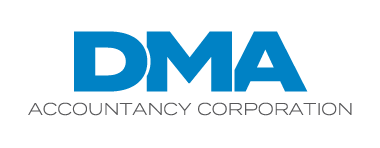There are major federal income tax incentives for manufacturers to buy new equipment. Yet leasing equipment can be a better choice for some companies. How do you decide what to do? There are many factors and potential benefits to weigh. Here’s a quick look.
Tax advantages of buying
New and used qualifying business assets placed in service between September 28, 2017, and December 31, 2022, are eligible for 100% first-year bonus depreciation. For certain assets with longer production periods, the placed-in-service deadline is December 31, 2023. This tax break will gradually be phased out from 2023 through 2026.
Alternatively, for tax years beginning in 2021, you can potentially write off up to $1.05 million of the cost of qualifying new and used assets with the Sec. 179 deduction. Under a phaseout rule, the maximum Sec. 179 deduction for tax years beginning in 2021 is reduced dollar-for-dollar by the excess of Sec. 179 deduction-eligible asset additions over $2.62 million.
The Sec. 179 deduction for a tax year can’t exceed your aggregate net business taxable income from all sources calculated before the deduction. That means the deduction can’t create or increase a federal income tax net operating loss (NOL). The portion of a Sec. 179 deduction that would create or increase an NOL is disallowed and carried forward to the following tax year. Unlike bonus depreciation, the Sec. 179 deduction isn’t scheduled to be reduced. In fact, the applicable limits are annually indexed for inflation.
Buying risks
When your business buys equipment, you don’t have to worry about a lease term expiring — the asset is yours to keep for as long as you want. However, purchasers must pay the full cost up front or finance the purchase and then make monthly payments, which include interest charges. If you finance a purchase, you’ll also likely have to provide a down payment.
Obsolescence is another threat, especially for high-tech items. Once equipment is obsolete, it may be difficult to sell.
Leasing arguments
Over the short run, leasing may appear to be more cost-effective than buying. Leases typically don’t require a large down payment. For companies with credit issues, they may be easier to obtain than equipment loans. Lease payments are usually lower than loan payments because you’re paying only to use the asset for the lease term. And once the lease expires, you generally return the asset to the leasing company, unless you exercise a right to buy it at the end of the lease term.
So there’s minimal risk that a leased asset will become outdated and it’s easier to upgrade if it does. However, over the long haul, leasing may be more expensive than buying because you’re continuously renewing the lease or acquiring a new one. What’s more, when you lease equipment, you’re generally locked in for a specified term and obligated to keep making lease payments, even if you stop using the property.
Lease payments are generally tax-deductible as “ordinary and necessary” business expenses. But leased assets don’t qualify for 100% first-year bonus depreciation, Sec. 179 expensing or depreciation over the asset’s useful life under MACRS.
Best decisions
Tax laws surrounding manufacturing equipment can be extremely complicated — many additional rules apply beyond what we’ve discussed here — and these laws frequently change. Also, there could be financial reporting consequences. To help ensure your company is making the best decisions, contact us.
© 2021


Recent Comments